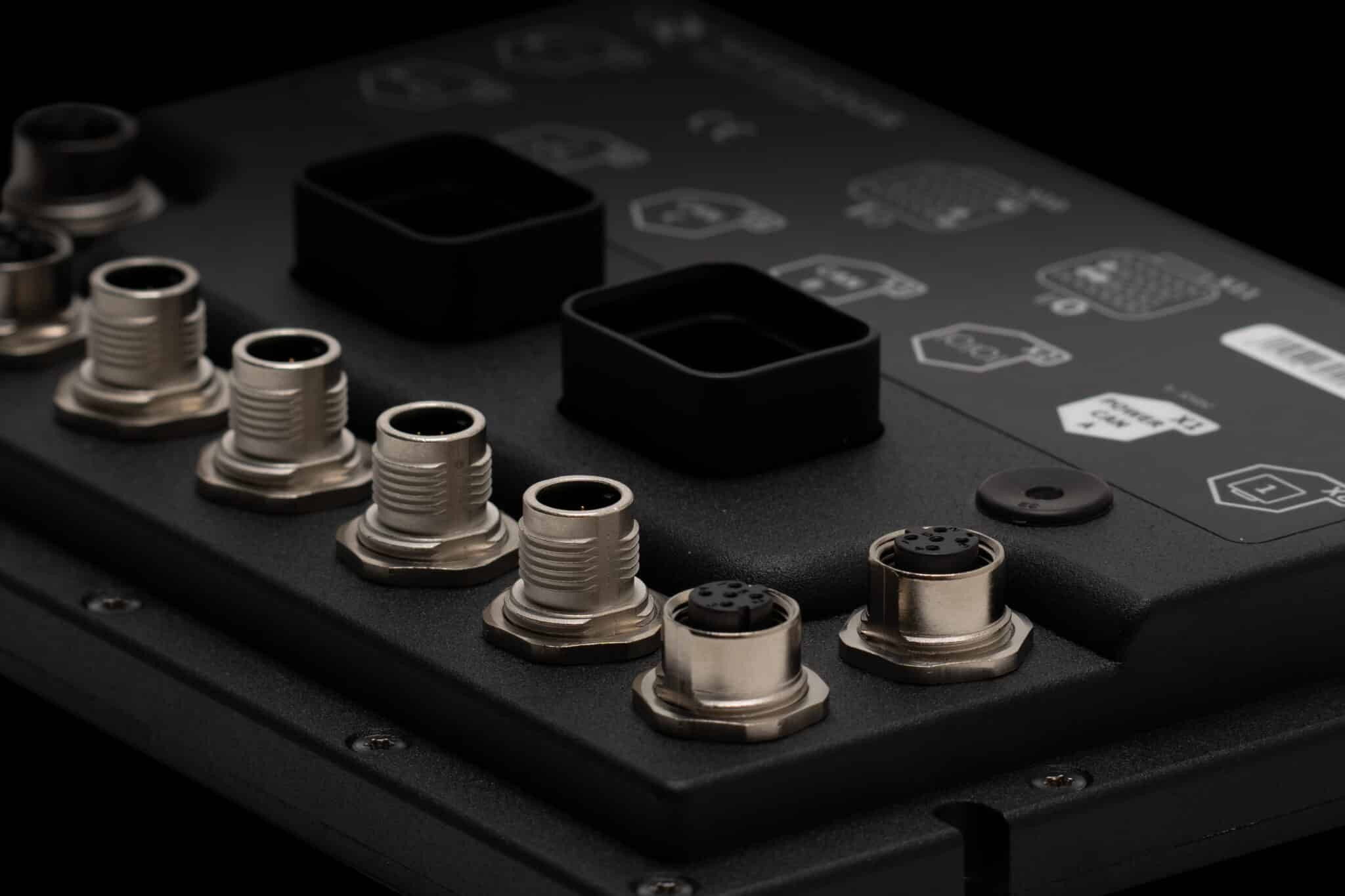How your project progresses with Exertus
At Exertus, we design and implement purpose-built controllers and advanced software solutions for demanding mobile machinery use. Every project is unique, but we always guide our customers through a clear and proven process. This ensures a successful outcome time after time and lays the foundations for a long-term collaboration.
Learn more about how our projects progress!
How our projects successfully progress
- Identifying customer needs
- Planning and prioritization
- Implementation and testing
- Deployment and delivery
- Long-term collaboration
Why does this work?
Close collaboration: The customer is involved throughout the process, ensuring that the result aligns with their needs.
Agile development: Continuous testing and iteration enable us to adapt quickly to changes.
Proactive challenge management: Potential issues are identified and addressed early–no surprises!
Tailored solutions: We deliver tailored solutions to ensure optimal alignment with your requirements.
Long-term partnership: Our commitment doesn’t end with the project; we continue to develop and support the solution for years to come.
Want to learn more? Contact us to find the solution that best fits your needs!
Identifying customer needs
Planning and prioritization
Implementation and testing
Deployment and delivery
Long-term collaboration
Laying the foundation for mobile machinery solutions
It starts with defining the project’s goals, potential challenges, and customer expectations–always in close collaboration with the customer. After this initial assessment, both parties clearly understand the project’s scope and desired outcome.
From the start, we assign dedicated team members specializing in mechanics, software, and project management. This ensures seamless communication and efficient project execution.
Throughout the project, we maintain close communication with the customer through regular meetings and ongoing collaboration, keeping the defined needs at the core of our work. However, the initial assessment is not set in stone–our approach remains flexible, allowing us to refine the final product as needs evolve.
The initial assessment is not set in stone but is updated based on needs as the project progresses.
From vision to detailed planning
Once a shared direction is clear, we dive into the details. The customer is actively involved in the planning process, allowing us to prioritize the most critical features and ensure that the outcome meets actual needs.
During the planning phase, we create a detailed roadmap for the entire project while identifying specific customization requirements. Customization is often based on existing platforms and sub-assemblies we utilize across multiple products. It can also occur at the firmware level, where the software implements specific customer-required features.
The scope of customization always depends on the customer’s needs–we tailor products by adding essential features or optimizing existing ones.
We identify and prepare for potential challenges from the start. To manage them effectively, we integrate dedicated risk assessment checkpoints into the project plan, ensuring unexpected issues don’t disrupt the timeline. Our company follows a structured risk management process, conducting analyses down to the component level and continuously monitoring progress. These proactive measures enable us to address challenges before they escalate.

Iterative development for efficiency and precision
We build solutions iteratively, continuously developing and testing the product. This transparent and efficient approach enables quick adjustments and refinements at every project stage.
We aim to reach the prototype stage quickly to test the product in real-world conditions. Testing is conducted in-house and in collaboration with the customer and our certified partners.
Defining key testing criteria ensures that the testing phase remains clear and structured. In addition to customer-specific requirements, we also consider potential industry standards and regulatory demands. Testing may involve environmental requirements, such as verifying functionality under varying temperatures or demanding conditions.
On the software side, we conduct unit testing and continuously monitor application development to ensure a cohesive and reliable final product.
Testing is continuous throughout the project, both in-house and in collaboration with the customer and our partners.
Ensuring a smooth deployment
When the product is ready, the final step is deployment. This may involve releasing software, delivering hardware, or field testing in the customer’s environment. During deployment, we ensure that everything functions as expected and provide any necessary training.
While the project officially concludes with deployment, our customer relationships often extend beyond this phase–and have continued for years with many of our customers.
During deployment, we work closely with the customer to ensure everything functions as intended.

Beyond the project: long-term support and partnership
The end of a project doesn’t mean the end of our customer relationship. Maintaining a long-term partnership is as important as the project—we won’t leave you alone!
We provide ongoing support and updates as needed. A strong and lasting collaboration ensures that the solution continues to evolve alongside changing needs over the years.
A long-term customer relationship is just as essential to a project as the development process.

Hear it from our customers: case Logset
With the support of Exertus, Logset has developed innovative solutions that take Logset’s operations and product development to the next level.
“What makes this partnership special is that it’s not limited to just one contact person. The management regularly thinks about the future and develops our collaboration. This has enabled us to move quickly and efficiently, without unnecessary bureaucracy.” – Tom Knipström, Development Manager, Logset.
Contact us for detailed information
"*" indicates required fields